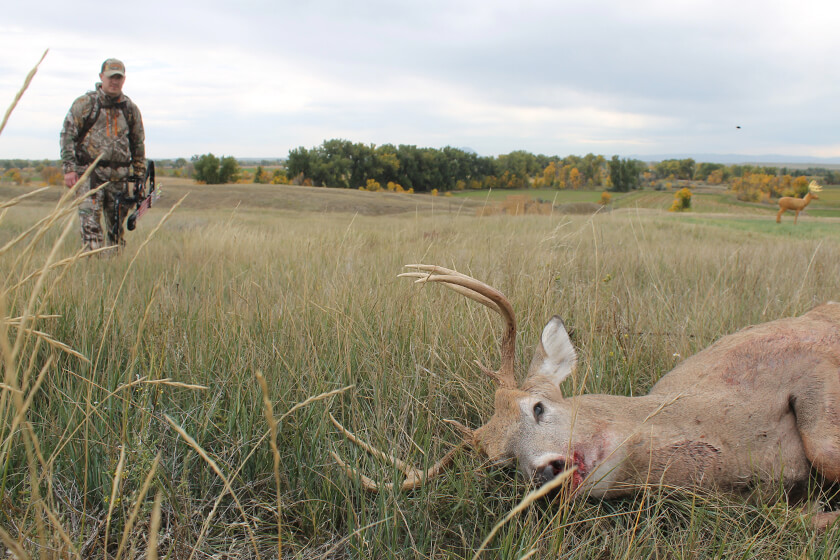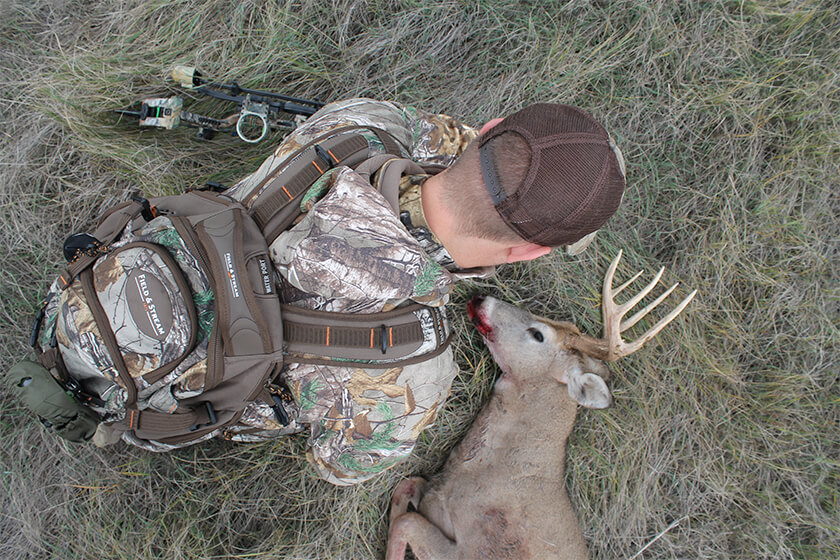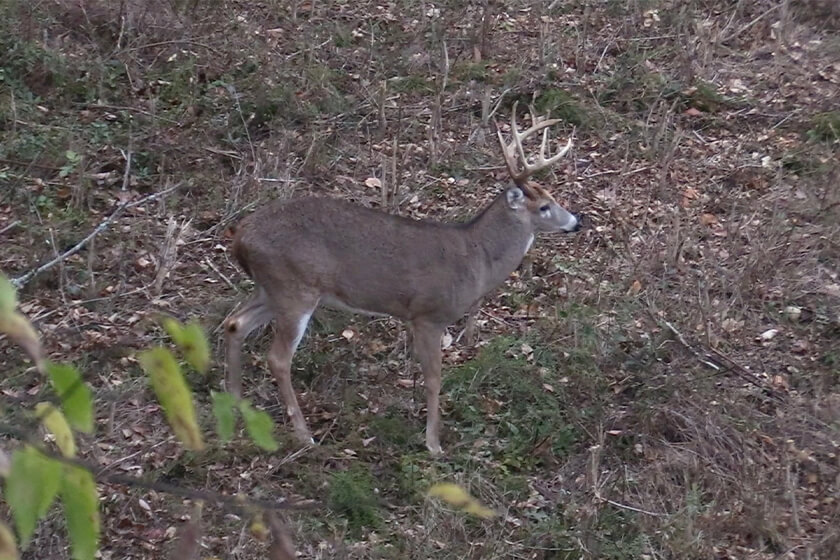
Some of the best deer hunting is miles from the nearest roads and civilizations, and they aren’t easy places to hunt. (Honeycutt Creative photo)
It’s been said many times that the true work doesn’t start until after a hunter pulls the trigger. That’s only partially true. A lot of work leads up to the shot, too. But getting a deer out of the backcountry can be very difficult. Here’s how to get it done.
The Easy Way Out
In some cases, it might be possible to use a more modern method to haul your deer out of the woods. Trucks, tractors, ATVs (I sure love my Polaris), UTVs, and other motorized devices are perfect for hauling deer on private land. No shame at all in using these. The use of these vehicles makes the process much simpler.
Not all private properties permit it, though. Agricultural ground and other landowners who just don’t permit vehicle access are prime examples. Some private lands just don’t allow it, such as waterways that can’t be crossed, steep, unnavigable terrain, and more.
Public land is its own discussion. The vast majority of these don’t allow ATV, UTV, or vehicle access. Therefore, you’re forced to find alternative options.

No Wheels, No Problem: Taking It Out Whole
There are to groups of ways to get deer out of the backwoods without a motor and four wheels. The first is by taking it out whole. This is the more commonly used approach.
Several reasons exist for using this method. In some states, you must check in your deer (via phone, online, or in-person) before quartering and processing the deer. If you don’t have cell service, or must do this in-person, taking it out whole is the only option. Also, for those who take their deer to a processor, some won’t accept deer that have been quartered. Third, if you’re close enough to the vehicle, it might make more sense to use one of these options.
Pure Muscle
Start pulling. It’s that simple. Use a deer drag or another tool to simplify the task.
Power in Numbers
Have an army of friends? Get their help. Take turns dragging and use a system where two can pull at once.
Over the Shoulder
You know those old-school photos where hunters slung the deer over their shoulders like a sack of potatoes? You rarely see it. Maybe try carrying it on your shoulders, but I’ll wait until my next button buck, or maybe a big ol’ Coues deer.
Deer Backpack
A once-popular method was to create a deer backpack by tying its front and back feet together on each side. Then, slide your arms through like a backpack. Just remember to cut the tarsal glands off, or they’ll be transferring their stink to your armpits. As Rut Daniels likes to say, “Oh, that’s nasty.”
Game Carts
A more modern option is the use of game carts. These have wheels, and wheels make the task much easier.
Game Sleds
These are like carts, but without wheels. Game sleds are better when snow is on the ground, and across marshy, swampy ground.
Mountain Bike
Some hunters gut the deer and position it over the seat of the bike to stabilize it on top of the bike. The legs hang down on each side for balance.
E-Bikes
Where electric hunting bikes are allowed, you can use it like the mountain bike approach above, or maybe even pull the deer, if the bike has enough power.
Pack Pole
In the past, hunters commonly tied the two front and back feet together, slid a cedar or pine pole through the legs, and hung the deer upside down to carry it out. That still works today.
Travois
A travois is an excellent game drag. Essentially a long stretcher, this method uses physics to lighten the load.
Float It
Those who hunt near creeks, rivers, and lakes might prefer to use a canoe, kayak, or even motorized boat (where allowed) to get their deer out of the backwoods.

No Wheels, No Problem: Breaking It Down
The second group of ways to get a deer out of the backcountry is by breaking it down. In some instances, this is much easier and more practical than taking the animal out whole. It’s less common in the East, but more common in the West.
For those who are a long way from the truck, quartering it up and packing it out might make more sense. Those who are hunting in difficult or dangerous terrain might consider it, too. If you have the right gear to do this, it’s certainly easier than taking the animal out in one piece. It just requires more trips.
Horses
This is a common occurrence in mountain country. Hunters use pack horses to get gear and meat back to the truck.
High-Volume Packs
Some packs, such as Insights The Vision Bow Pack, are great for holding a lot of gear, even weapons. Fortunately, this can double as a compartment to pack out meat, too. (Just bag it first.)
Pack Frames
Other packs are specifically designed for packing out meat and large amounts of gear. The ALPS OutdoorZ Commander Freighter Frame + Pack, and Mystery Ranch Metcalf are two of many great options.
And remember, always keep good knives on hand. It makes the job much safer, simpler, and faster. Use game bags to keep your packs clean. And definitely attach some blaze orange to your deer before bringing them out of the backcountry.












































